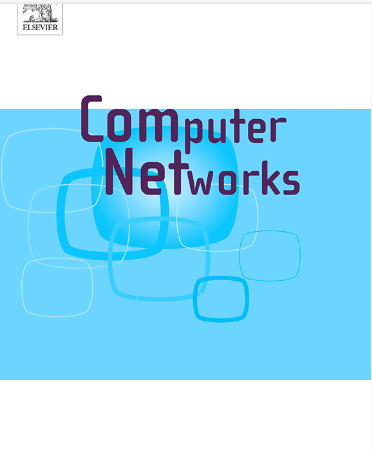Latency minimization in IRS-UAV assisted WPT-MEC systems: An ID-AOPDDQN-based trajectory and phase shift optimization approach
IF 4.4
2区 计算机科学
Q1 COMPUTER SCIENCE, HARDWARE & ARCHITECTURE
引用次数: 0
Abstract
Intelligent Reflectors (IRS) assisted Wireless Power Transmission and Mobile Edge Computing (WPT-MEC) are considered as solutions for implementing sustainable Internet of Things (IoT) networks that can effectively improve network performance and reduce data transmission latency. There are still challenges such as flexible deployment of IRSs and multivariate joint optimization remain. In this paper, we study the task offloading problem of unmanned aerial vehicles (UAVs) carrying IRSs (IRS-UAV) assisted WPT-MEC, which exploits the flexibility of the UAV to dynamically improve the energy harvesting and task offloading channel transmission between ground equipment (GD) and access point (AP). In this system, we consider the association relationship between the hovering points (HPs) of the IRS-UAV and the GDs, the phase shift of the IRS-UAV, the flight trajectory, the beamforming vector, and the offloading decision and transmit power of the GDs to minimize latency performance under the constraint of energy consumption. To solve this multivariable non-convex problem, we propose an ID-AOPDDQN (ISODATA clustering, successive convex approximation and parametric Dueling deep -network) algorithm. At first, we cluster the HPs and the association relationship between GDs and HPs through an efficient load balancing algorithm (ISODATA), so as to cover all GDs to the maximum extent. Secondly, on the basis of clustering, we divide the target problem into two sub-problems. For the first sub-problem, Successive Convex Approximation (SCA) is used to transform it into a convex problem, and the phase shift and beamforming vectors of radio energy transmission are optimized alternately. For the second subproblem, we design the PDDQN (a combination of DDPG and Dueling DQN) algorithm to process the mixed space based on the first problem of the solution, where DDPG processes continuous motion (such as phase shift) and Dueling DQN processes discrete action (such as offloading decisions). Simulation results show that the ID-AOPDDQN algorithm significantly improves the performance of the system in latency.
IRS-UAV辅助WPT-MEC系统的延迟最小化:基于id - aopddqn的轨迹和相移优化方法
智能反射器(IRS)辅助无线电力传输和移动边缘计算(WPT-MEC)被认为是实现可持续物联网(IoT)网络的解决方案,可以有效提高网络性能并减少数据传输延迟。但是,红外卫星系统的灵活部署和多变量联合优化等问题仍然存在。本文研究了搭载红外卫星的无人机(IRS-UAV)辅助WPT-MEC的任务卸载问题,利用无人机的灵活性,动态改善地面设备(GD)和接入点(AP)之间的能量收集和任务卸载信道传输。在该系统中,考虑了IRS-UAV悬停点与GDs之间的关联关系、IRS-UAV的相移、飞行轨迹、波束形成矢量以及GDs的卸载决策和发射功率,在能量消耗约束下最小化延迟性能。为了解决这一多变量非凸问题,我们提出了一种ID-AOPDDQN (ISODATA聚类,连续凸逼近和参数Dueling深度Q-network)算法。首先,我们通过一种高效的负载均衡算法(ISODATA)对HPs以及GDs与HPs之间的关联关系进行聚类,以最大程度地覆盖所有GDs。其次,在聚类的基础上,将目标问题划分为两个子问题。对于第一子问题,采用逐次凸逼近(SCA)将其转化为一个凸问题,并交替优化无线能量传输的相移矢量和波束形成矢量;对于第二个子问题,我们设计了PDDQN (DDPG和Dueling DQN的组合)算法,在解决第一个问题的基础上处理混合空间,其中DDPG处理连续运动(如相移),Dueling DQN处理离散动作(如卸载决策)。仿真结果表明,ID-AOPDDQN算法显著提高了系统在时延方面的性能。
本文章由计算机程序翻译,如有差异,请以英文原文为准。
求助全文
约1分钟内获得全文
求助全文
来源期刊

Computer Networks
工程技术-电信学
CiteScore
10.80
自引率
3.60%
发文量
434
审稿时长
8.6 months
期刊介绍:
Computer Networks is an international, archival journal providing a publication vehicle for complete coverage of all topics of interest to those involved in the computer communications networking area. The audience includes researchers, managers and operators of networks as well as designers and implementors. The Editorial Board will consider any material for publication that is of interest to those groups.
 求助内容:
求助内容: 应助结果提醒方式:
应助结果提醒方式:


